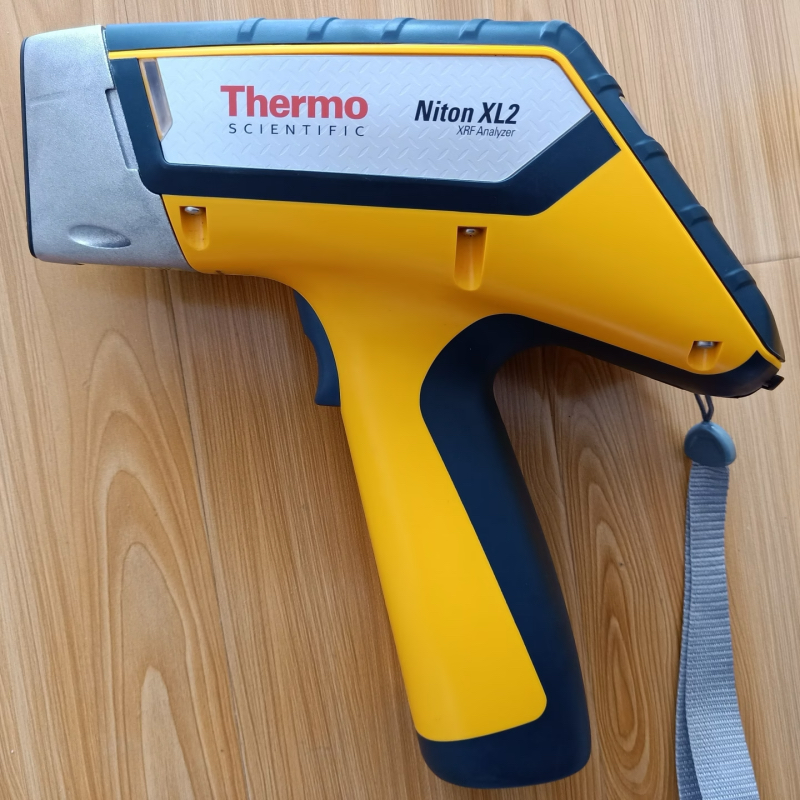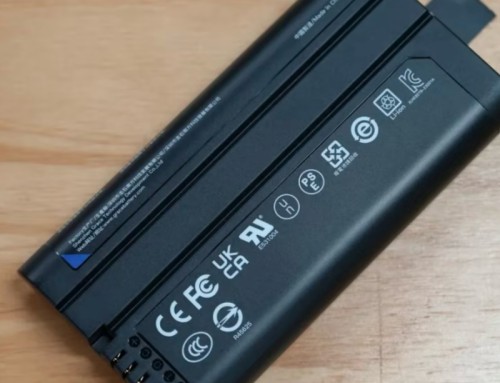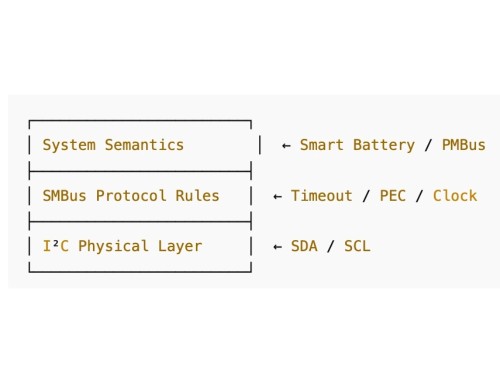Which Battery to Choose for Handheld XRF Spectrometer?
Introduction to handheld XRF spectrometers
Handheld X-Ray Fluorescence (XRF) spectrometers have revolutionized the way we analyze and identify materials in the field. These compact and portable devices allow researchers, inspectors, and professionals to conduct elemental analysis on-site, eliminating the need for transporting samples to a laboratory. With their ability to provide rapid and non-destructive testing, handheld XRF spectrometers have become indispensable tools across various industries, including environmental monitoring, mining exploration, art conservation, and manufacturing quality control.
However, the efficacy of these instruments heavily relies on the quality and performance of their power source – the battery. Choosing the right battery can significantly impact the device’s runtime, accuracy, and overall reliability. In this article, we’ll delve into the factors to consider when selecting a battery for your handheld XRF spectrometer, explore different battery types, and provide insights to help you make an informed decision.
Importance of choosing the right battery for handheld XRF spectrometers
Handheld XRF spectrometers are designed for field use, often in remote or challenging environments. Consequently, the battery’s performance plays a crucial role in ensuring the instrument’s functionality and accuracy. An inadequate or poorly chosen battery can lead to various issues, such as:
- Reduced runtime: A battery with insufficient capacity may require frequent recharging or replacement, limiting the device’s operational time and potentially disrupting fieldwork.
- Inaccurate measurements: As the battery drains, the spectrometer’s internal components may not receive sufficient power, leading to inaccurate or inconsistent readings.
- Safety concerns: Improper battery handling or the use of incompatible batteries can pose safety risks, including overheating, leakage, or even explosions.
- Environmental impact: Disposable batteries contribute to electronic waste, which can have detrimental effects on the environment if not properly disposed of or recycled.
By carefully considering the battery’s specifications and compatibility with your handheld XRF spectrometer, you can ensure reliable performance, accurate results, and a longer lifespan for your valuable instrument.
Factors to consider when selecting a battery for handheld XRF spectrometers
When choosing a battery for your handheld XRF spectrometer, several factors should be taken into account to ensure optimal performance and longevity. Here are some crucial considerations:
- Battery chemistry: Different battery chemistries offer varying levels of energy density, discharge characteristics, and environmental impact. Common options include lithium-ion, nickel-metal hydride, and alkaline batteries.
- Capacity and runtime: The battery’s capacity, measured in milliampere-hours (mAh) or watt-hours (Wh), determines the amount of energy it can store and, consequently, the runtime of your handheld XRF spectrometer.
- Voltage and compatibility: Ensure that the battery’s voltage matches the spectrometer’s requirements to avoid potential damage or malfunctions.
- Operating temperature range: Handheld XRF spectrometers are often used in varying environmental conditions, so the battery should be able to perform reliably within the specified temperature range.
- Charge cycles and lifespan: The number of charge cycles a battery can withstand before its capacity starts to degrade significantly impacts its overall lifespan and cost-effectiveness.
- Safety certifications: Look for batteries that comply with relevant safety standards and certifications, such as UL, CE, or UN transportation regulations, to ensure safe operation and transportation.
- Brand reputation and warranty: Reputable battery manufacturers often offer better quality control, customer support, and warranty coverage, providing peace of mind and a more reliable investment.
By carefully evaluating these factors, you can select a battery that meets the specific requirements of your handheld XRF spectrometer and ensures optimal performance in the field.
Different types of batteries suitable for handheld XRF spectrometers
When it comes to powering handheld XRF spectrometers, several battery types are commonly used, each with its own advantages and disadvantages. Let’s explore the most popular options:
Lithium-ion (Li-ion) batteries
Lithium-ion batteries are widely regarded as the industry standard for portable electronic devices due to their high energy density, low self-discharge rate, and lack of memory effect. These batteries offer excellent runtime and can be recharged hundreds of times before experiencing significant capacity degradation.
Advantages
- High energy density, providing longer runtime
- Low self-discharge rate, maintaining charge for extended periods
- No memory effect, allowing partial charging without impacting battery life
- Environmentally friendly and recyclable
Disadvantages
- Higher initial cost compared to other battery types
- Potential safety concerns if mishandled or damaged
- Gradual capacity loss over time, even when not in use
Nickel-metal hydride (NiMH) batteries
Nickel-metal hydride batteries are a popular choice for handheld XRF spectrometers due to their reasonable energy density, low environmental impact, and cost-effectiveness.
Advantages
- Higher capacity and longer runtime than alkaline batteries
- Environmentally friendly and recyclable
- Relatively low self-discharge rate
- Affordable and widely available
Disadvantages
- Lower energy density compared to lithium-ion batteries
- Memory effect can reduce battery life if not properly maintained
- Limited number of charge cycles before significant capacity loss
Alkaline batteries
Alkaline batteries are a cost-effective and readily available option for powering handheld XRF spectrometers, particularly in situations where runtime is not a primary concern.
Advantages
- Inexpensive and widely available
- No memory effect or special charging requirements
- Safe and easy to handle
Disadvantages
- Lower energy density and shorter runtime compared to lithium-ion and NiMH batteries
- Non-rechargeable, leading to higher operational costs over time
- Environmental impact due to disposable nature
When choosing a battery type for your handheld XRF spectrometer, consider factors such as runtime requirements, environmental impact, cost, and ease of use. While lithium-ion batteries offer superior performance, nickel-metal hydride and alkaline batteries may be suitable for specific applications or budgetary constraints.
Comparison of battery options – lithium-ion, nickel-metal hydride, and alkaline
To help you make an informed decision, let’s compare the three main battery types – lithium-ion, nickel-metal hydride, and alkaline – across several key aspects:
|
Aspect |
Lithium-ion |
Nickel-metal hydride |
Alkaline |
|---|---|---|---|
|
Energy density |
High |
Moderate |
Low |
|
Runtime |
Long |
Moderate |
Short |
|
Charge cycles |
High (500-1000) |
Moderate (300-500) |
N/A (non-rechargeable) |
|
Self-discharge rate |
Low |
Moderate |
Moderate |
|
Memory effect |
No |
Yes |
No |
|
Environmental impact |
Recyclable |
Recyclable |
Disposable |
|
Initial cost |
High |
Moderate |
Low |
|
Operating temperature |
Wide range |
Moderate range |
Moderate range |
|
Safety concerns |
Potential if mishandled |
Low |
Low |
As you can see, lithium-ion batteries excel in terms of energy density, runtime, and charge cycles, making them an ideal choice for demanding applications. However, they come at a higher initial cost and require proper handling to mitigate safety risks.
Nickel-metal hydride batteries strike a balance between performance and cost, offering a reasonable runtime and moderate charge cycles. They are environmentally friendly but may suffer from the memory effect if not properly maintained.
Alkaline batteries are the most cost-effective option but offer the shortest runtime and are not rechargeable, leading to higher operational costs over time. They are safe and easy to handle but have a higher environmental impact due to their disposable nature.
Ultimately, the choice will depend on your specific requirements, budget, and environmental considerations.
Advantages and disadvantages of each battery type
To further assist you in making an informed decision, let’s delve deeper into the advantages and disadvantages of each battery type:
Lithium-ion batteries
Advantages
- High energy density: Lithium-ion batteries pack a significant amount of energy into a compact size, enabling longer runtime for handheld XRF spectrometers.
- Low self-discharge rate: These batteries maintain their charge for extended periods, reducing the need for frequent recharging or replacement.
- No memory effect: Lithium-ion batteries can be partially charged without experiencing the memory effect, which can degrade battery life over time.
- Long lifespan: With proper care and usage, lithium-ion batteries can withstand hundreds of charge cycles before experiencing significant capacity loss.
- Environmentally friendly: Lithium-ion batteries are recyclable, reducing their environmental impact compared to disposable batteries.
Disadvantages
- Higher initial cost: Lithium-ion batteries are generally more expensive than other battery types, which can be a consideration for budget-conscious users.
- Safety concerns: If mishandled or damaged, lithium-ion batteries can pose risks such as overheating, leakage, or even explosions.
- Gradual capacity loss: Even when not in use, lithium-ion batteries can experience a gradual loss of capacity over time, requiring eventual replacement.
- Transportation restrictions: Due to their potential fire hazard, lithium-ion batteries may be subject to transportation restrictions, particularly on air travel.
Nickel-metal hydride (NiMH) batteries
Advantages
- Reasonable energy density: NiMH batteries offer a decent balance between energy density and cost, providing a moderate runtime for handheld XRF spectrometers.
- Environmentally friendly: Like lithium-ion batteries, NiMH batteries are recyclable, reducing their environmental impact compared to disposable options.
- Low self-discharge rate: NiMH batteries maintain their charge reasonably well, reducing the need for frequent recharging or replacement.
- Affordable: NiMH batteries are generally more cost-effective than lithium-ion batteries, making them a budget-friendly option.
Disadvantages
- Memory effect: NiMH batteries can suffer from the memory effect, which can reduce their capacity if not properly maintained and fully discharged periodically.
- Shorter lifespan: NiMH batteries typically have a lower number of charge cycles compared to lithium-ion batteries before experiencing significant capacity loss.
- Lower energy density: While still decent, NiMH batteries have a lower energy density than lithium-ion batteries, resulting in shorter runtime for handheld XRF spectrometers.
- Temperature sensitivity: NiMH batteries can be sensitive to extreme temperatures, potentially affecting their performance and lifespan.
Alkaline batteries
Advantages
- Inexpensive: Alkaline batteries are generally the most cost-effective option, making them suitable for budget-conscious users or situations where runtime is not a primary concern.
- No memory effect: Like lithium-ion batteries, alkaline batteries do not suffer from the memory effect, simplifying their usage.
- Safe and easy to handle: Alkaline batteries are generally considered safe and easy to handle, with minimal risk of leakage or explosion.
- Widely available: Alkaline batteries are readily available and can be easily purchased from various retailers, making them a convenient choice.
Disadvantages
- Low energy density: Alkaline batteries have a significantly lower energy density compared to lithium-ion and NiMH batteries, resulting in shorter runtime for handheld XRF spectrometers.
- Non-rechargeable: Alkaline batteries are disposable and cannot be recharged, leading to higher operational costs over time and contributing to electronic waste.
- Limited shelf life: Alkaline batteries have a limited shelf life and can lose their charge over time, even when not in use.
- Environmental impact: While alkaline batteries are generally safer than other battery types, their disposable nature contributes to environmental pollution if not properly disposed of or recycled.
By carefully weighing the advantages and disadvantages of each battery type, you can make an informed decision that aligns with your specific requirements, budget, and environmental considerations.
Battery life and runtime considerations
One of the most critical factors when choosing a battery for your handheld XRF spectrometer is its runtime – the amount of time the device can operate before requiring a battery replacement or recharge. Battery life and runtime are influenced by several factors, including:
- Battery capacity: Measured in milliampere-hours (mAh) or watt-hours (Wh), the higher the capacity, the longer the runtime.
- Energy consumption of the spectrometer: Different handheld XRF spectrometers have varying energy consumption rates, which can impact battery life.
- Operating conditions: Factors such as temperature, humidity, and altitude can affect battery performance and runtime.
- Usage patterns: Continuous or intermittent use, as well as the intensity of the analysis, can influence battery drain rates.
- Battery age and condition: As batteries age and undergo multiple charge cycles, their capacity and runtime may decrease.
To maximize battery life and runtime, consider the following tips:
- Choose a high-capacity battery: Opt for batteries with a higher mAh or Wh rating to ensure longer runtime for your handheld XRF spectrometer.
- Use power-saving modes: Many handheld XRF spectrometers offer power-saving modes that can extend battery life by reducing energy consumption when not in active use.
- Proper storage and maintenance: Store batteries in a cool, dry place and follow the manufacturer’s recommendations for charging and maintenance to prolong their lifespan.
- Carry spare batteries: Having spare batteries on hand can ensure uninterrupted operation in the field, particularly for extended or remote deployments.
- Monitor battery performance: Regularly check the battery’s charge level and capacity to anticipate when a replacement or recharge may be necessary.
By understanding the factors that influence battery life and runtime, and implementing best practices for battery management, you can maximize the efficiency and productivity of your handheld XRF spectrometer in the field.
Tips for maximizing battery performance
To ensure optimal performance and longevity of your handheld XRF spectrometer’s battery, it’s essential to follow best practices for battery care and maintenance. Here are some valuable tips to help you get the most out of your battery:
- Follow the manufacturer’s instructions: Refer to the user manual or manufacturer’s guidelines for proper battery handling, charging, and storage procedures specific to your handheld XRF spectrometer and battery type.
- Use the recommended charger: Employ the charger recommended by the manufacturer to ensure proper charging and avoid potential damage to the battery or device.
- Avoid extreme temperatures: Extreme temperatures can adversely affect battery performance and lifespan. Store and operate your handheld XRF spectrometer and batteries within the recommended temperature range.
- Partial discharge and recharge: For lithium-ion and NiMH batteries, it’s generally recommended to partially discharge them before recharging to maintain optimal battery health and capacity.
- Calibrate the battery gauge: Some handheld XRF spectrometers allow you to calibrate the battery gauge, ensuring accurate charge level readings and preventing over-discharge or overcharging.
- Avoid full discharge: Completely draining lithium-ion and NiMH batteries can potentially damage them and reduce their overall lifespan. It’s best to recharge them before they reach a critically low charge level.
- Proper storage: When not in use for extended periods, store batteries in a cool, dry place with a partial charge (around 40-50% capacity) to prevent degradation.
- Cycle batteries: If using multiple batteries, rotate their usage to ensure even wear and prolong their overall lifespan.
- Monitor battery performance: Regularly check the battery’s charge level, runtime, and capacity to identify any potential issues or the need for replacement.
- Replace batteries when necessary: Over time, batteries will naturally degrade and lose capacity. Replace them when their performance becomes unsatisfactory or when recommended by the manufacturer.
By following these tips and adhering to best practices, you can maximize the performance, reliability, and longevity of your handheld XRF spectrometer’s battery, ensuring efficient and accurate fieldwork.
Recommended battery brands for handheld XRF spectrometers
When selecting a battery brand, it’s essential to consider factors such as compatibility with your specific handheld XRF spectrometer model, battery chemistry, capacity, and operating temperature range. Additionally, look for brands with a proven track record, good customer support, and warranty coverage.
Tefoo energy‘s GS2037BH Lithium-ion battery harnesses the power of Panasonic cells, renowned for their industry-leading energy density and stability. This ensures your Handheld XRF Spectrometer operates at peak efficiency, delivering accurate results wherever your research takes you.
Conclusion and final thoughts
Choosing the right battery for your handheld XRF spectrometer is crucial for ensuring reliable performance, accurate results, and efficient fieldwork. By considering factors such as battery chemistry, capacity, runtime, operating conditions, and brand reputation, you can make an informed decision that meets your specific needs and requirements.
Lithium-ion batteries are often the preferred choice for their high energy density, long runtime, and lack of memory effect, but they come at a higher initial cost and require proper handling. Nickel-metal hydride (NiMH) batteries offer a balance between performance and cost, while alkaline batteries provide a cost-effective option for situations where runtime is not a primary concern.
Regardless of the battery type you choose, it’s essential to follow best practices for battery care and maintenance, such as using the recommended charger, avoiding extreme temperatures, and properly storing and cycling batteries. Additionally, monitoring battery performance and replacing batteries when necessary can help maximize the lifespan and efficiency of your handheld XRF spectrometer.
By investing in a high-quality battery from TEFOO ENERGY and implementing proper battery management practices, you can ensure that your handheld XRF spectrometer remains a reliable and accurate tool for your fieldwork and research endeavors.




